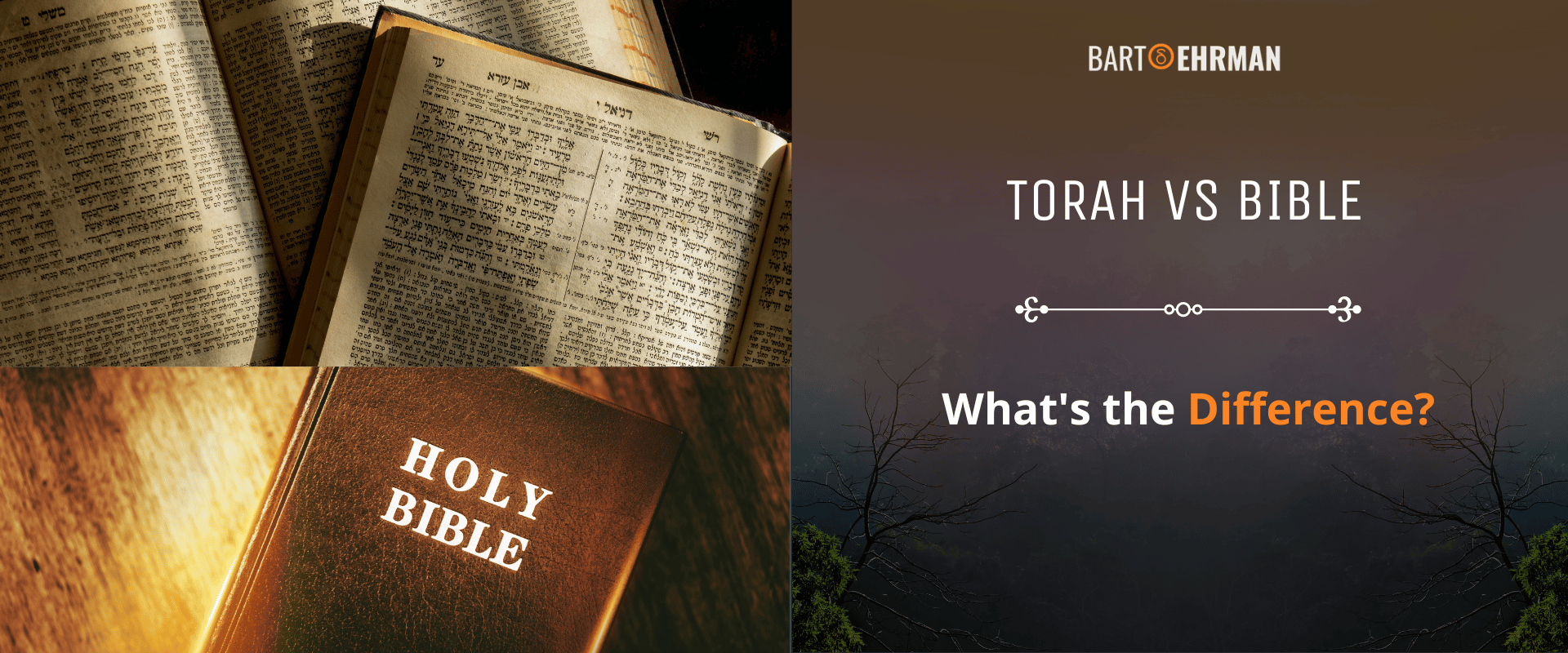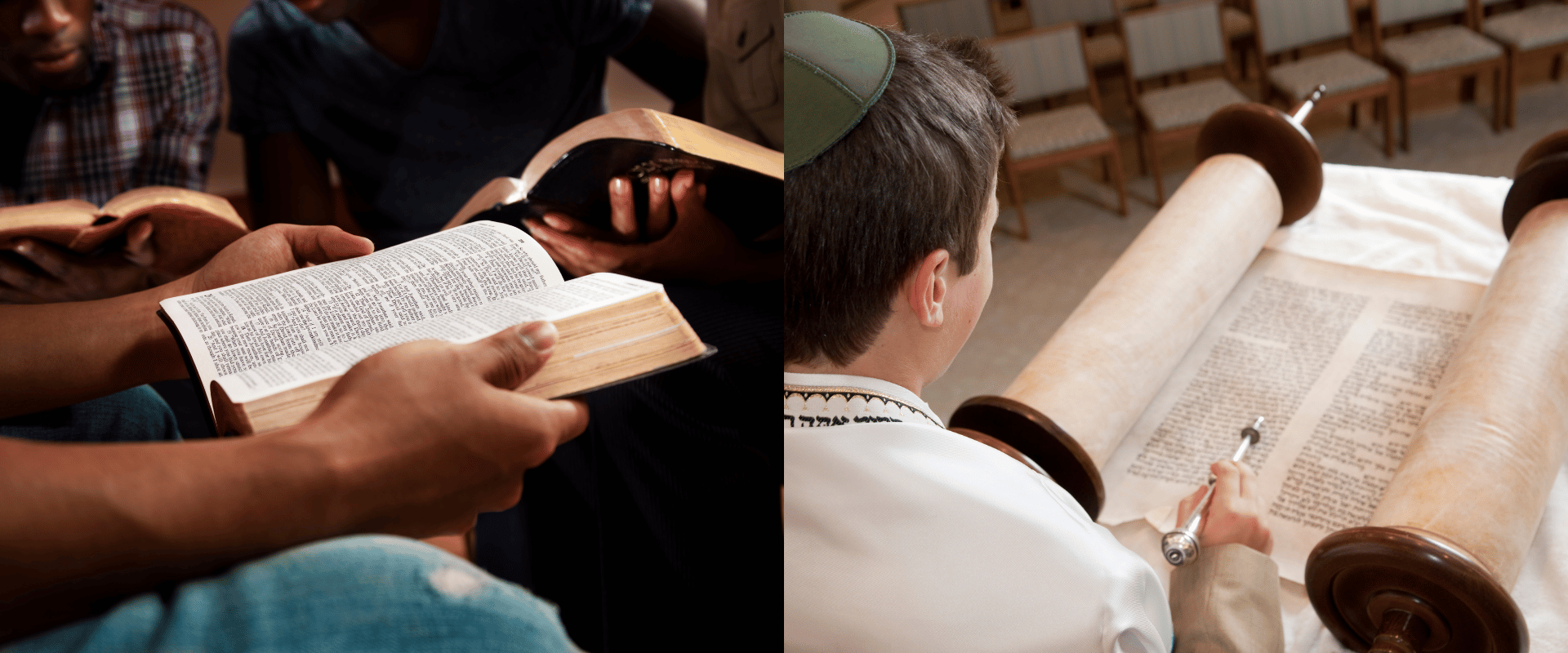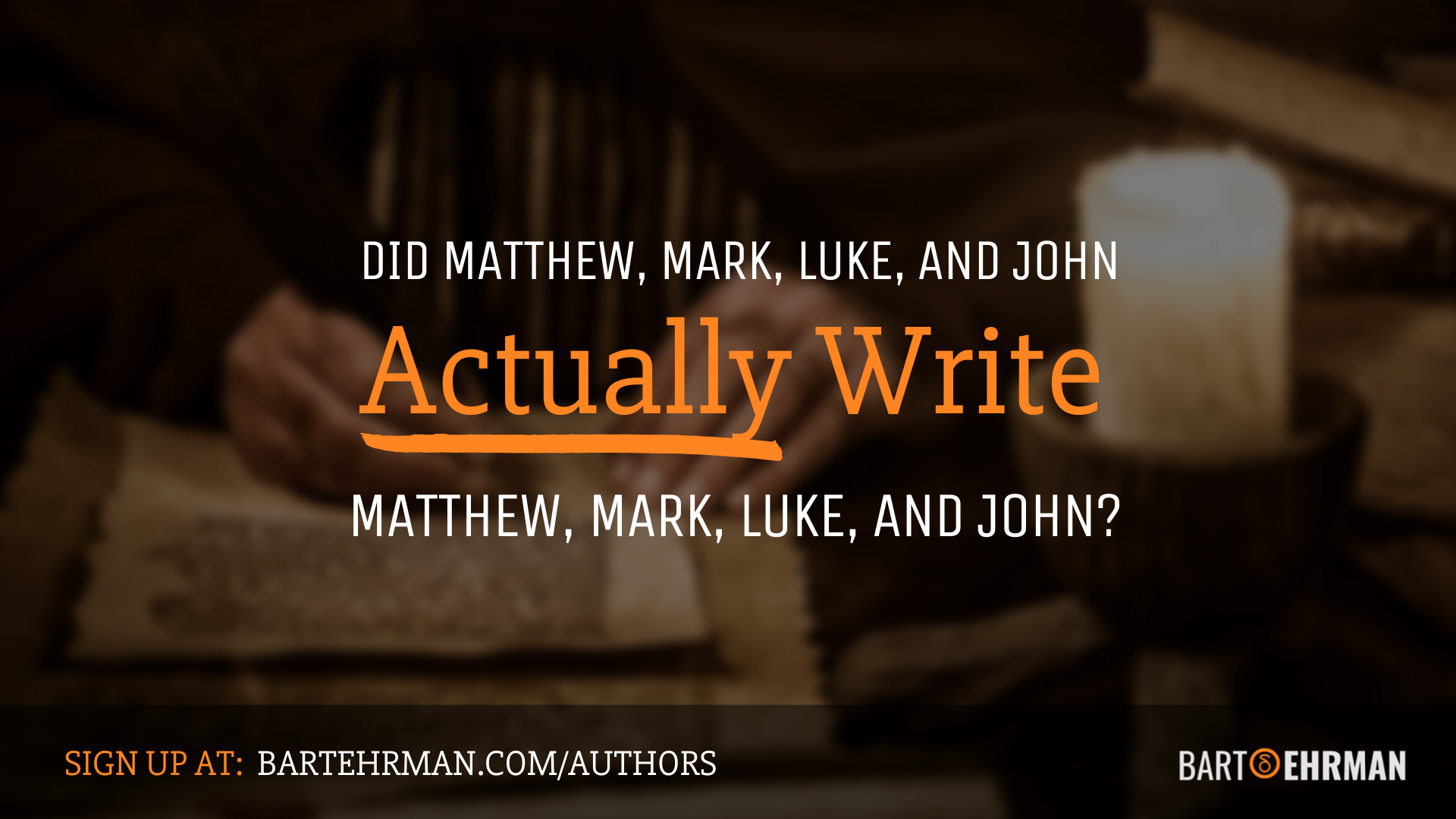Torah vs Bible: What's the Difference?

Written by Marko Marina, Ph.D.
Author | Historian | BE Contributor
Verified! See our guidelines
Verified! See our editorial guidelines
Date written: June 27th, 2024
Disclaimer: The views and opinions expressed in this article belong to the author and do not necessarily match my own. - Dr. Bart D. Ehrman
Judaism traces its historical roots to the Hebrew Bible, known to Christians as the “Old Testament.” This collection of texts recounts the history, beliefs, and practices of a distinct people known as Israelites. These ancient Jews believed their destiny was intertwined with a specific land — a promise God gave to their founding patriarch, Abraham.
These sacred writings encapsulate the identity, religious devotion, history, philosophy, and traditions of the Jewish people, highlighting their unique relationship with a supreme God who created and sustains the world. To learn more about each book of the Bible, make sure to check out our earlier article.
Among these texts, the Torah holds a place of paramount importance. It’s considered the foundation of Jewish law, ethics, and communal identity. For Jews, the Torah isn’t just a historical document, but a living guide that shapes their daily lives and spiritual practices.
However, it’s essential to understand the Torah's place within the broader context of the Bible. The Torah is a part of the larger compilation of sacred writings known as the Hebrew Bible. This expansive body of work encompasses various genres, including history, poetry, prophecy, and wisdom literature.
In this article, we’ll explore the difference between the Bible and the Torah. Also, we’ll examine how the Torah fits into the broader Hebrew Bible, and what is the importance of the rest of the Bible.
This Torah vs. Bible exploration will illuminate the profound and lasting impact of these sacred writings on both Judaism and Christianity.

Judaism: The Religion of the Book
In today's world, we often associate religion with a sacred text. The three major monotheistic religions (Judaism, Christianity, and Islam) all focus on a set of sacred scriptures. For the Jews, the Holy Scripture is, of course, the so-called Hebrew Bible.
It is the collection of books that Jews regard as sacred, God-given revelation. But wait! What about Christians? Don’t they also use the Bible?
In An Introduction to Judaism, Nicholas de Lange explains: “The term ‘Bible’ is borrowed from Christian usage, and the Jewish Bible contains substantially the same texts as the Christian ‘Old Testament’, although they are arranged differently. (Affiliate Disclaimer: We may earn commissions on products you purchase through this page at no additional cost to you. Thank you for supporting our site!) The existence of this common ground between Jews and Christians has in the past facilitated controversy and disputation.”
And a bit of confusion if I may add! To learn more about it, check out our “Hebrew Bible vs. Christian Bible” article!
However, both the Jews and the Christians greatly emphasized the literary tradition and the concept of the Sacred Scripture! This is the main reason scholars today emphasize that Judaism is, first and foremost, the religion of the book.
As it turns out, the idea of having a Sacred collection of texts was virtually unheard of in the ancient world. To put it more bluntly, Judaism's emphasis on literary tradition and scripture made it a unique phenomenon in the pre-Christian era.
As Bart Ehrman notes in The Triumph of Christianity, Greco-Roman polytheistic religions focused predominantly on the practical aspects of their piety and didn’t develop the notion of a central, authoritative set of written traditions. While the Romans did possess works like the Sibylline Books (Latin: “Libri Sibyllini”), these texts never held canonical status comparable to that of the Hebrew Bible in Judaism.
Both internal traditions and external developments influenced the process of canonization within the Jewish tradition. A pivotal moment in this process was the destruction of the Jerusalem Temple in 70 C.E. This event significantly altered the landscape of Jewish religious practice. With the loss of the Temple and its sacrificial system, Judaism became increasingly centered on texts.
Additionally, the disappearance of various competing Judaic sects, such as the Essenes, allowed the Pharisaic tradition (a Jewish movement that emphasized the interpretation of the Torah and oral traditions) to become the dominant force shaping Judaism. Furthermore, the rise of Christianity necessitated a clearer definition of Jewish boundaries and identity, which, in turn, accelerated the Hebrew Bible’s canonization process.
This period of transformation, between the 1st and 2nd centuries C.E. was marked by significant decisions regarding the Jewish canon. Scholars generally agree that, during this time, fundamental choices were made about which texts would be included in the canon, thus solidifying the Hebrew Bible's structure and contents.
Understanding the distinctive nature of Judaism as the religion of the book is crucial to grasping the broader context of any Torah vs. Bible discussion. Judaism's sacred texts encapsulate not only its religious laws and ethical teachings, but also its history, philosophy, and cultural identity.
To fully appreciate the differences between the Torah and the broader concept of the Bible, we must delve deeper into the contents of the Hebrew Bible. This exploration will reveal how the Torah fits into the larger framework of Jewish sacred writings and highlight the unique role it plays in the religious life of the Jewish people.
Torah vs. Bible: Torah as the Foundation of the Jewish Sacred Texts
The Hebrew Bible, a collection of literature from ancient Jewish tradition, was composed over an extended period under circumstances that remain somewhat unclear. Among many Jews today, a more common term for the Hebrew Bible is “Tanakh”, an acronym derived from the first Hebrew letters of its three parts: Torah (Teaching), Nevi'im (Prophets), and Ketuvim (Writings).
Did You Know?
Did you know that both Jews and Christians are referred to as the "People of the Book" in the Quran? This term, "Ahl al-Kitab" in Arabic, highlights the shared reverence for sacred scriptures between these faiths and Islam.
The Quran recognizes the Torah and the Bible as divinely revealed texts and thus acknowledges the common spiritual heritage of Jews and Christians. This designation underlines the deep respect for the literary tradition of these religions and emphasizes the important role that sacred scriptures play in shaping religious identity and practice. However, there is an important distinction for the Torah vs. Quran discussion. Unlike the Torah and the Bible, the Talmud is not recognized as a divinely revealed text in the Quran. In other words, the Quran focuses on the Torah and the Bible as the primary sacred scriptures without acknowledging the Talmud's significant role in Jewish religious practice and legal tradition.
More than just a historical account, the Biblical narrative provides the foundational materials for Judaism, forming a system of action and thought rooted in four core ideas: monotheism, the people, the land, and the Torah.
The Torah, also known as the Five Books of Moses, is the first and most authoritative part of the Hebrew Bible. While religious tradition attributes these books — Genesis, Exodus, Leviticus, Numbers, and Deuteronomy — to Moses, who is said to have led the Israelites out of Egypt around 1250 B.C.E., scholars agree that their composition involved a complex process spanning several centuries.
Despite this, the Torah holds the highest prestige and sanctity within Judaism. It’s read regularly in synagogue rituals, a practice that likely predates the institution of public prayer.
In Le judaïsme, Regine Azria summarizes the Torah's content succinctly: "The Torah begins with the story of Creation and ends with the death of Moses. It introduces us to the genealogies of the ancestors and then the descendants of Abraham; it tells us the history of the Patriarchs, that of the Egyptian period and the exile from Egypt, the wanderings in the desert, and the Revelation. To this narrative part (Haggadah) is added a legislative part (Halakkah) which includes the presentation of Sinaitic laws." (my translation) According to the oral tradition, Moses received the Sinaitic laws from God at Sinai.
Virtually all Jewish legal traditions are considered to originate from the Torah. Historically, this text was the primary (and likely the only) one taught to children receiving formal education during the Second Temple Period (516 B.C.E. - 70 C.E.).
In Jewish Literacy, Joseph Telushkin notes that each book of the Torah has a unique name in Hebrew which is usually taken from its opening words. In contrast, the English names reflect the book's content.
The first book, Genesis, is called “Brei'sheet” in Hebrew, meaning “In the beginning,” mirroring its opening word. The second book, Exodus, is known as “Sh'mot” or Names, after its first verse, "Ay-leh shemot b'nai yisrael" (“And these are the names of the children of Israel”). It narrates the story of the Jewish slaves' liberation from Egypt.
The third book, Leviticus, known as “Va-Yikra” in Hebrew, outlines laws regarding animal sacrifices and other temple rituals overseen by the Levites. The fourth book, Numbers, called “Ba-Midbar” in Hebrew, includes a census of the Israelites and the story of Korakh's rebellion against Moses' leadership.
The final book, Deuteronomy, or “Devarim” in Hebrew, consists almost entirely of Moses' farewell address to the Israelites as they prepare to enter the Promised Land.
While the Torah is the most significant section, it’s just one part of the Tanakh.
The Torah vs. Bible distinction is essential for understanding the foundational texts of Judaism and their influence on both religious practice and cultural identity. In the following section, we’ll delve deeper into the rest of the Hebrew Bible and its features.

The Hebrew Bible: More Than Just the Torah
In addition to the Torah, the Hebrew Bible encompasses 34 other books, making a total of 39 compositions. The second major section of the Hebrew Bible is the Prophets (Nevi'im), which consists of 21 writings.
This section is further divided into two parts: the Former Prophets and the Latter Prophets. The Former Prophets includes six narrative books (Joshua, Judges, 1 and 2 Samuel, and 1 and 2 Kings) that continue the story of the Israelites from the time they entered the Promised Land.
These books offer a “historical” account of the early years of Israelite society and governance, though the term “historical” is in quotes because they are a mix of later traditions, legends, and some actual history.
The Latter Prophets, who were seen as spokespersons for God to the people, are categorized into Major and Minor Prophets.
The Major Prophets include the books of Isaiah, Jeremiah, and Ezekiel. The Minor Prophets consist of twelve shorter books: Hosea, Joel, Amos, Obadiah, Jonah, Micah, Nahum, Habakkuk, Zephaniah, Haggai, Zechariah, and Malachi. These terms don’t reflect the books’ importance, but rather their length.
For Christians, some prophetic books, such as Isaiah, are familiar because they believe Jesus fulfilled certain prophecies contained within them. For example, the "suffering servant" verses in Isaiah 53 are often interpreted in Christian tradition as foretelling Jesus' suffering and sacrifice.
The final section of the Hebrew Bible is the Writings (Ketuvim), which contains 13 books. This portion is the least organized internally and includes a diverse collection of literature. Despite this diversity, each part of the Ketuvim envisions a world created by and accountable to God.
However, it’s essential to recognize the great diversity within the Hebrew Bible which reflects different historical and cultural contexts. For example, the Book of Daniel offers apocalyptic visions, while the Book of Psalms provides poetic prayers and hymns.
Among the Ketuvim, some books contain surprising elements that seem at odds with the rest of the Hebrew Bible.
A notable example is the Book of Esther. As Harry Gersh notes in The Sacred Books of the Jews: “The book of Esther is pure fiction without any apparent religious or moral motive. Even the Jews in Esther are strangely nonreligious: they fast when they are in trouble, but they don’t pray; they feast when they have won a victory, but they don’t utter a blessing. Such actions are contrary to the spirit of the rest of the Bible.”
To better understand the difference between the Bible and the Torah, it’s helpful to visualize the structure of these sacred texts. The following table illustrates the contents of the Hebrew Bible, emphasizing how the Torah is a crucial but singular part of a much larger collection.
Section | Books Included | Description |
|---|---|---|
Torah | Genesis, Exodus, Leviticus, Numbers, and Deuteronomy | The foundational texts of Judaism that are attributed to Moses whose narratives cover creation, laws, and the early Israelite history. |
Prophets | Former Prophets:
| “Historical” narratives of the Israelites as they entered and settled in the Promised Land. |
Minor Prophets:
| Shorter prophetic books. Named for their brevity, not their lack of significance. | |
Writings | Psalms, Proverbs, Job, Song of Songs, Ruth, Lamentations, Ecclesiastes, Esther, Daniel, Ezra-Nehemiah, 1 and 2 Chronicles | A diverse collection of poetry, wisdom literature, “historical” accounts, and more. |
This table clarifies that while the Torah is the most significant part of the Hebrew Bible for Jews, it’s just one section within a larger, diverse body of literature that both Jews and Christians consider sacred.
Torah vs. Talmud: The Expansion of the Jewish Literacy Corpus
Being the people of the book, the Jews continued to produce books throughout much of the Second Temple Period.
Among these evolving works, the most significant contributions come from the formulators of rabbinic Judaism, spanning the first six centuries C.E. This period saw the creation of a rich body of literature that extended and elaborated upon the Biblical texts, primarily the Torah.
The first major genre of this rabbinic literature is the Midrash. Midrashic texts serve as extensive Biblical commentaries. However, they transcend mere scriptural exegesis, thus encompassing a wide array of literary forms, including fables, parables, and moral exemplars.
The second genre is legal literature, with the Mishnah standing as its central text. Completed in the early 3rd century C.E., the Mishnah is a codification of Jewish oral traditions and laws, systematically arranged into six sections that cover diverse aspects of religious and social behavior.
The subsequent centuries saw the development of the Talmud, a conceptual expansion of the Mishnah. Rabbinic academies in Palestine and Babylonia each produced their versions of the Talmud. The Babylonian Talmud eventually gained prominence and widespread use, while the Palestinian Talmud, or “Yerushalmi,” became less frequently studied.
The Talmud is far more than a legal code; it encapsulates 300 years of rabbinic discourse, debate, and interpretation, thus reflecting the dynamic and evolving nature of Jewish law and tradition.
Any comparison of the Torah vs. Talmud must recognize the different roles of these texts.
The Torah is the basic scripture containing the most important laws and stories of Judaism. In contrast, the Talmud is a comprehensive compendium that builds on the Torah’s teaching and contains detailed interpretations, discussions, and applications of the law.
Conclusion
In this Torah vs. Bible discussion, we have delved into the foundational texts of Judaism and their broader context within the Hebrew Bible. The Torah — composed of Genesis, Exodus, Leviticus, Numbers, and Deuteronomy — is the most significant and authoritative part of the Hebrew Bible. It provides the core teachings and laws that define Jewish life and practice.
However, the Hebrew Bible is more than just the Torah. It also includes the Prophets (Nevi'im) and the Writings (Ketuvim), each with its unique contributions to the religious, historical, and cultural world of Judaism.
Together, these texts form a comprehensive sacred corpus that shapes the identity and faith of the Jewish people but they also had a great influence on the development and identity-formation of Christianity.
Understanding crucial differences between the Torah and the larger Hebrew Bible is, therefore, essential for comprehending the foundational texts of Judaism and their lasting impact on both Jewish and Christian traditions.
To further explore these fascinating topics, consider enrolling in Bart D. Ehrman's online course, “In the Beginning: History, Legend, and Myth in Genesis”, where Dr. Ehrman provides a scholarly look at the Book of Genesis through contemporary historical and archaeological perspectives."
FREE COURSE!
WHY I AM NOT A CHRISTIAN
Raw, honest, and enlightening. Bart's story of why he deconverted from the Christian faith.
Over 6,000 enrolled!

